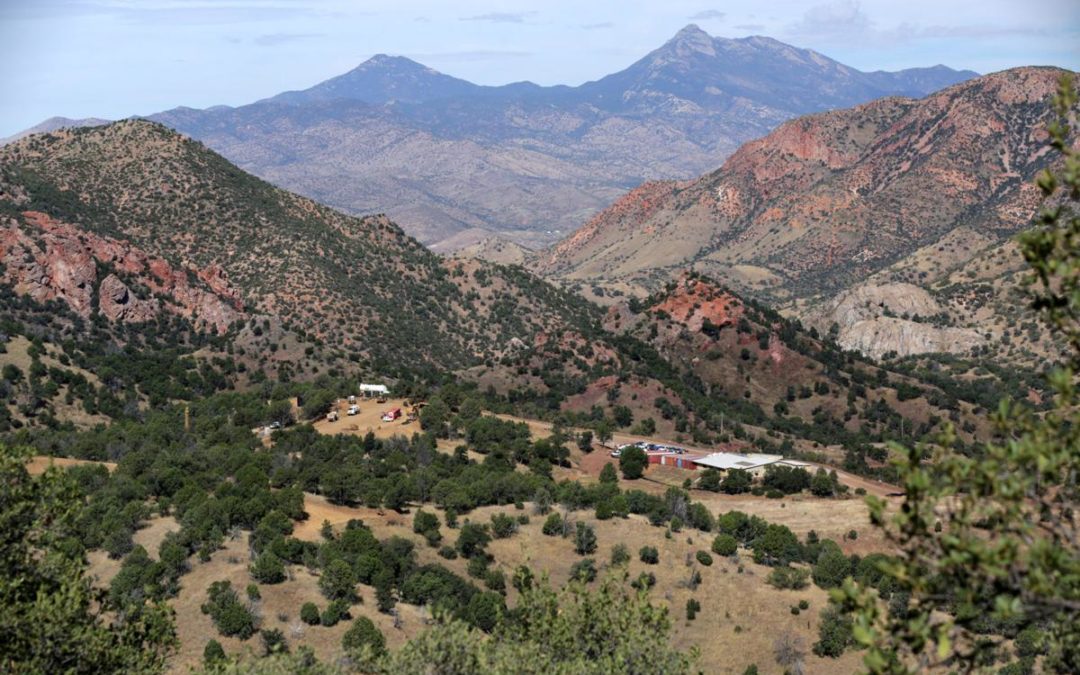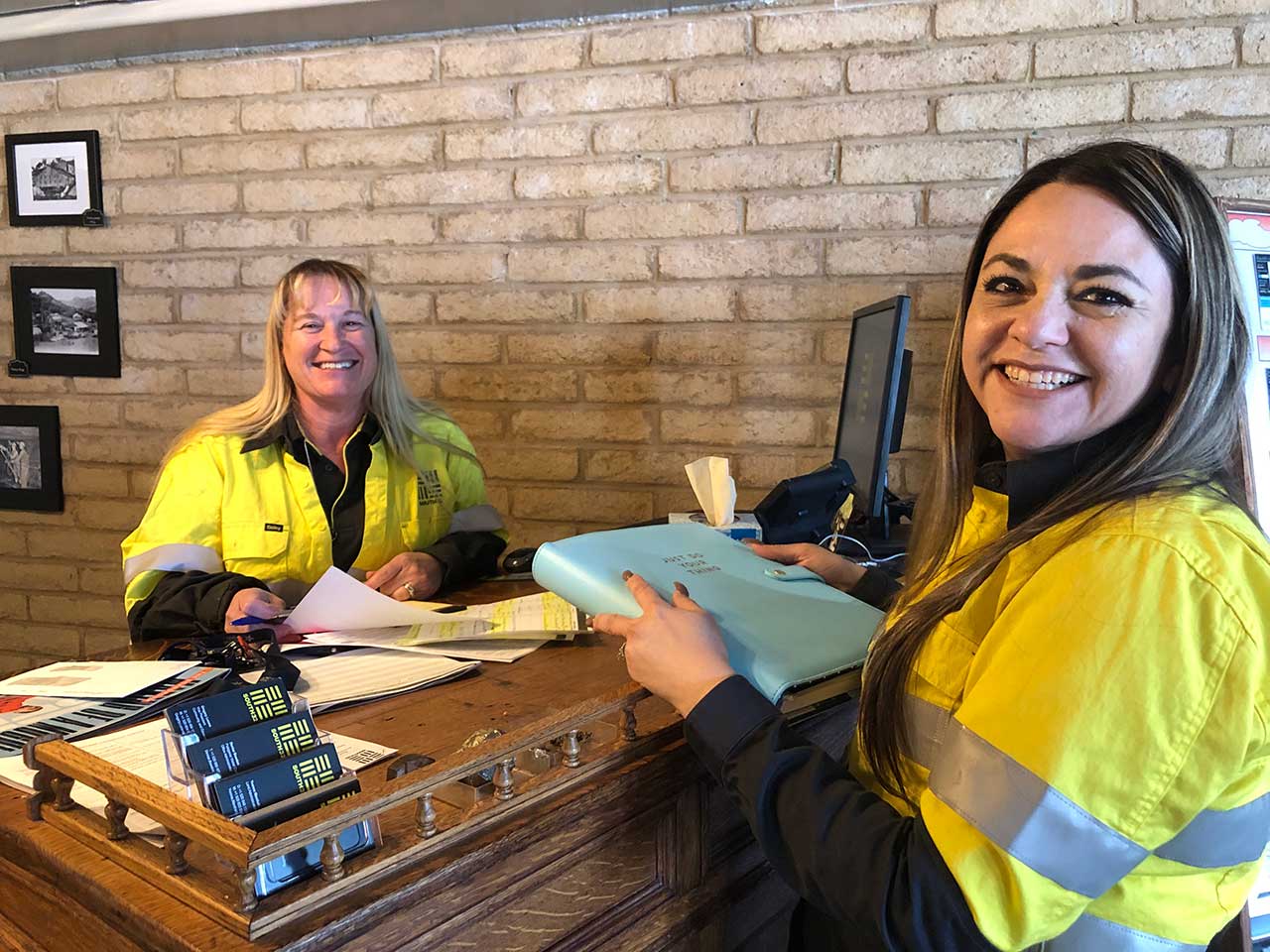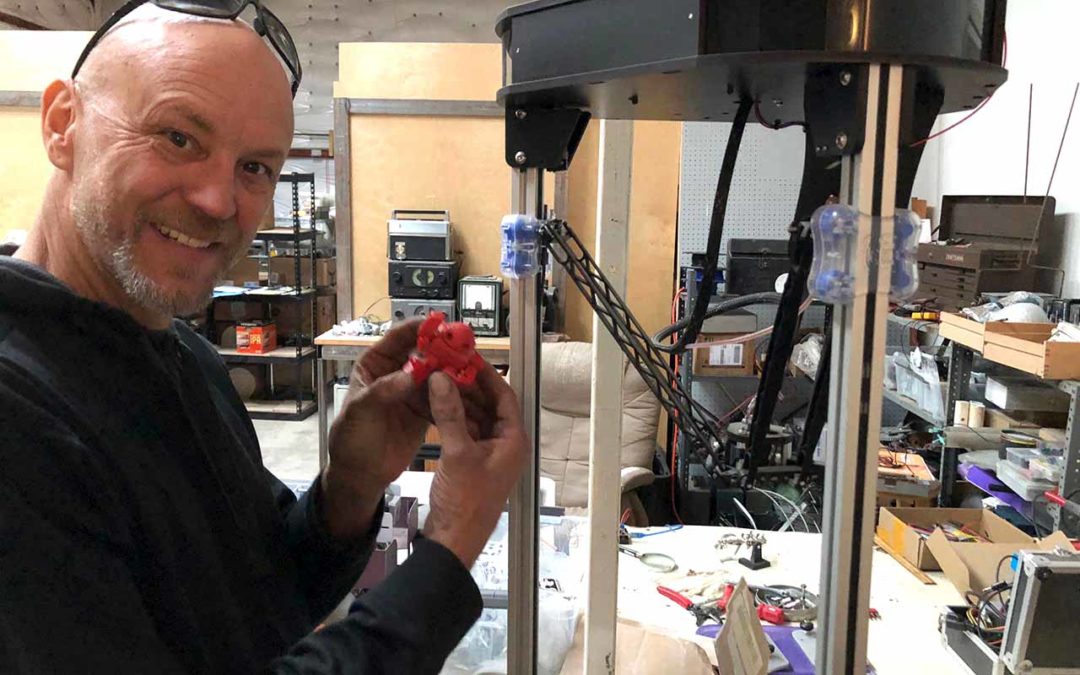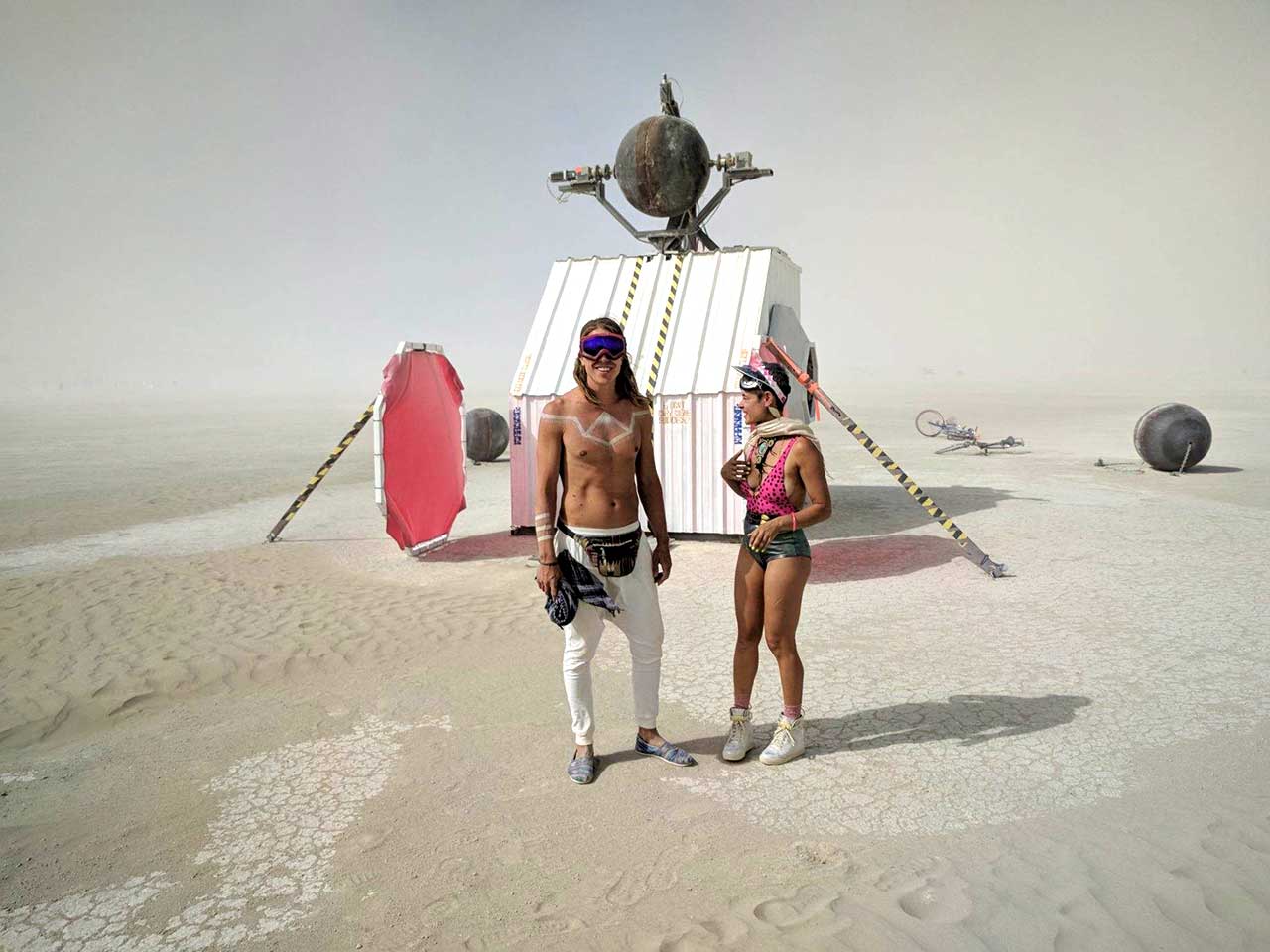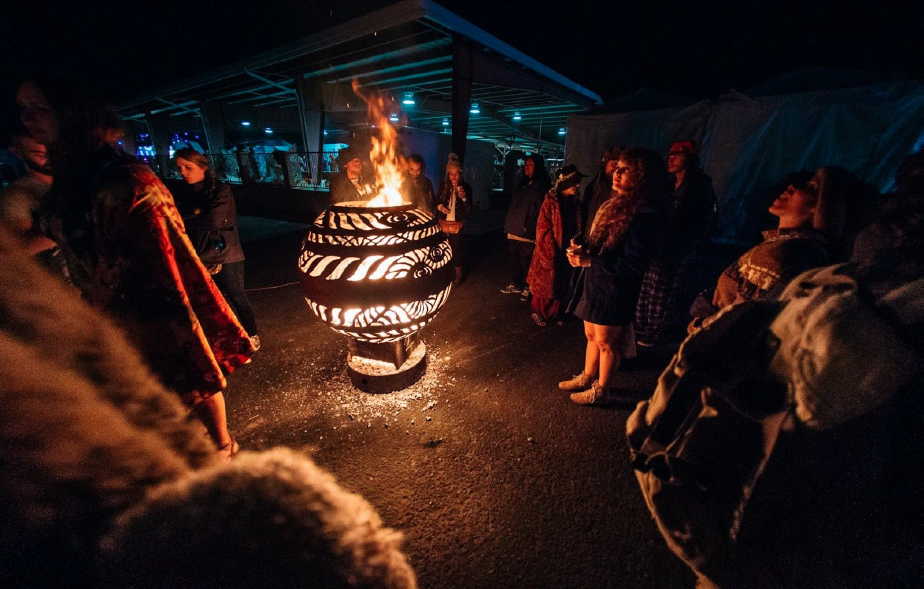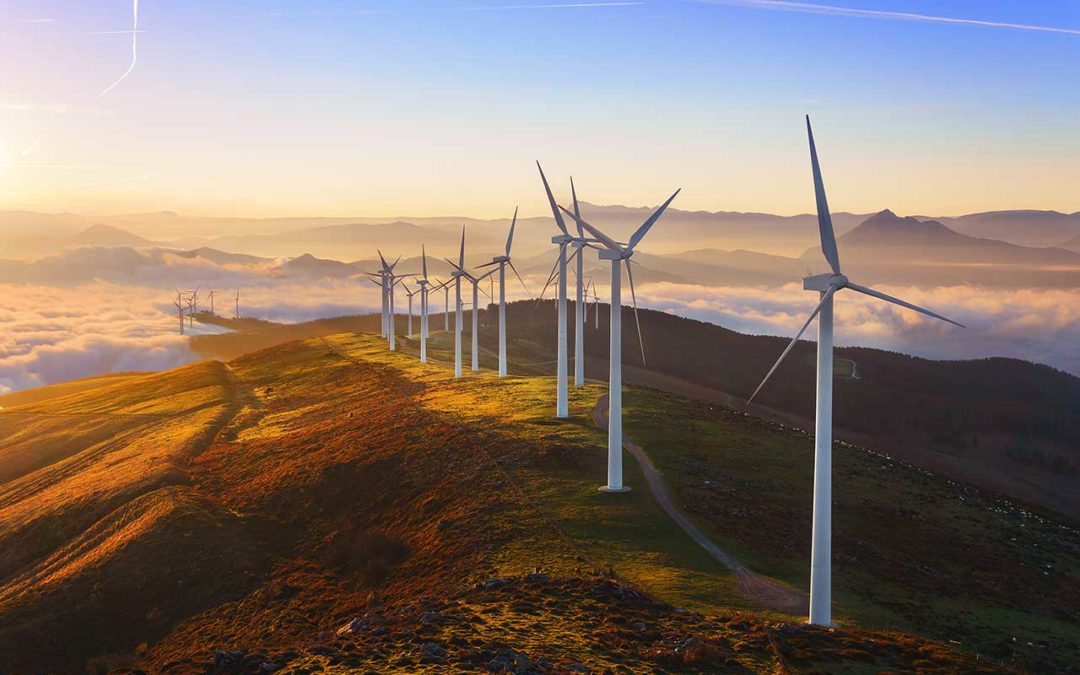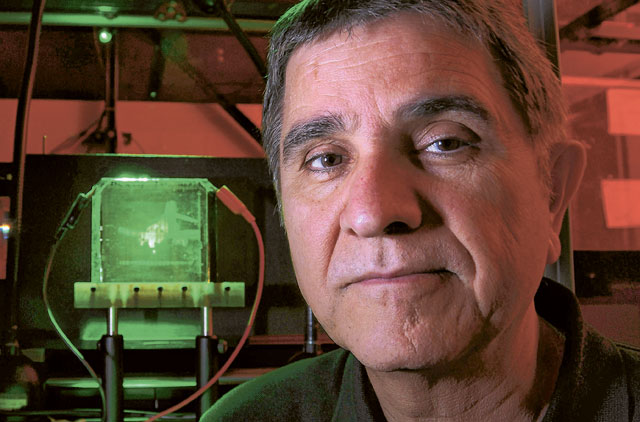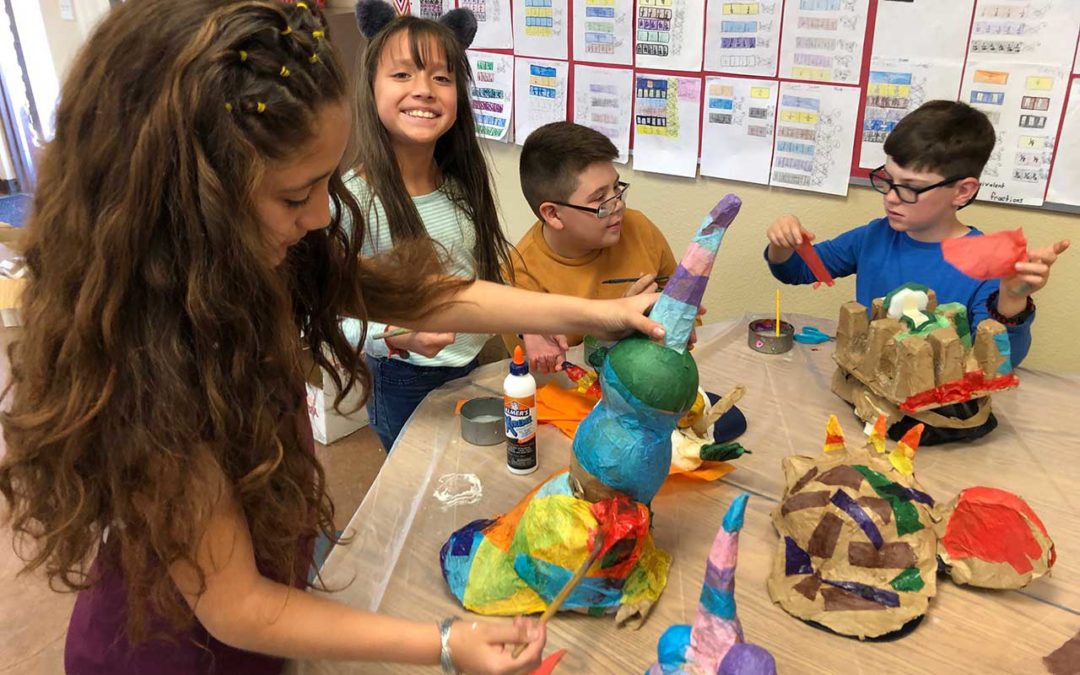
Update: The Universe Within Is In Full Swing At Patagonia Public Schools
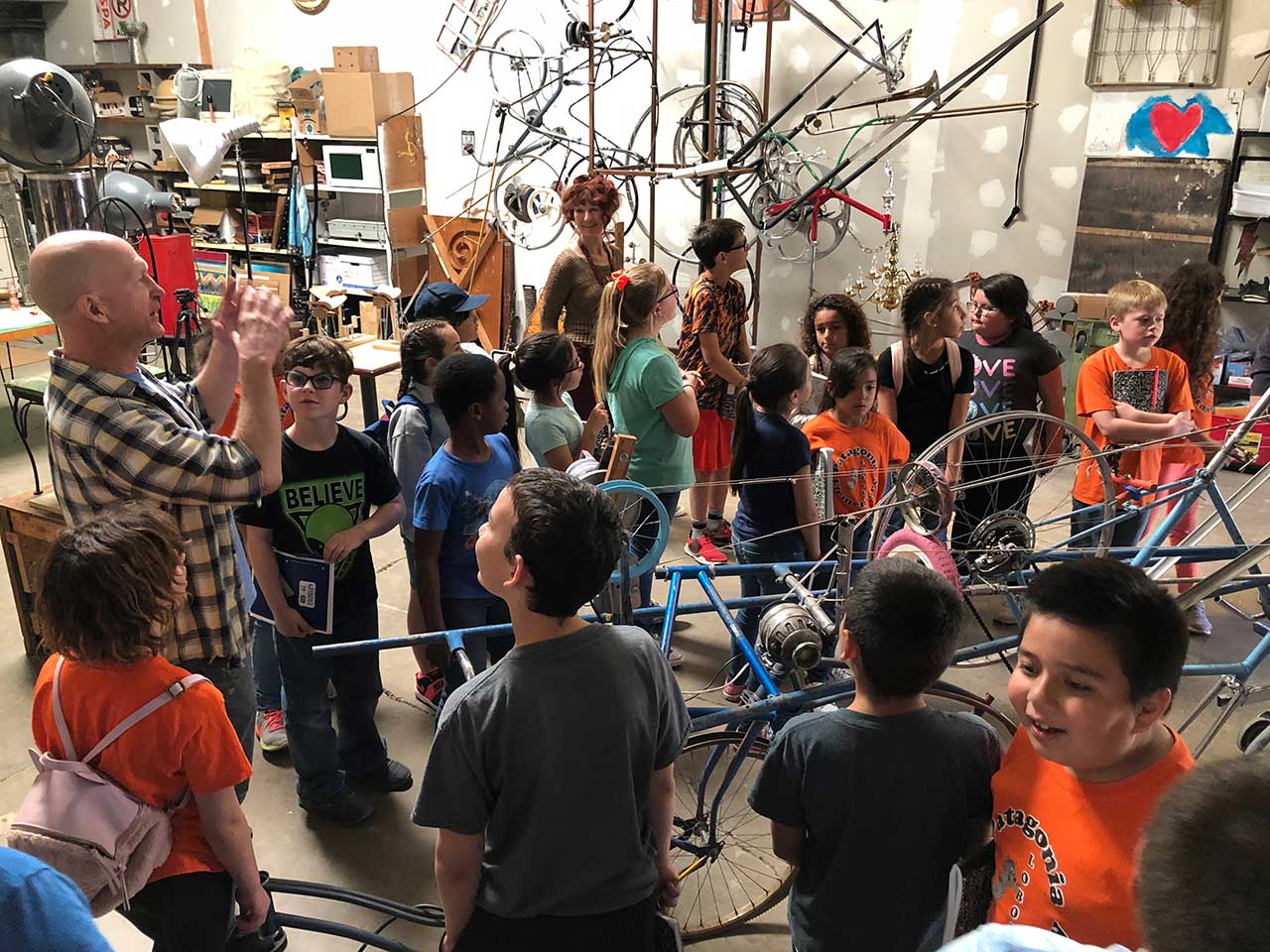
Five course modules are integrated into 16 two-hour classes that align with Arizona state standards.
The Daily Doodle
Students identify a creative solution for overcoming major social issues in their worlds, and identify the character they will play and that character’s virtues, powers and morals.
Corrugated Headgear
Students learn about design, technology and spatial relationships as they construct three-dimensional replicas of their characters’ headdresses from recycled materials.
The Art of Kinetics
Students learn about technology, motion, forces, gravity and balance as they complete four-dimensional kinetic structures from their characters’ worlds from recycled materials.
Digital Story Book
Students reflect on their group identity as world-builders, explain choices they made while creating their characters’ worlds and examine the evolution of their ideas through digital stories.
Exhibition & Pedestrian Carnival
Students curate and install their doodles, headgear, kinetic art, photos and video stories for The Universe Within group exhibition and, during the exhibition, they share their characters in a group parade. Peers, family and community get to see the students’ entire process of creating their work.

Dr. Bruce Bayly, Professor of Math at University of Arizona, works with MBC to translate the world of Beveldom into science and math lessons through video introductions, classroom instructions and hands-on activities.
Dr. Mark Runco, Faculty at Southern Oregon University, is using creativity tests to assess students’ creative potential and performance before and after coursework. A new interactive 3D creativity assessment was developed on the iPad, with support from Patagonia Regional Community Fund (PRCF). Other major sponsors for development of the curriculum include South32, Arizona Commission on the Arts and Doug & Mary Rogers.
Paula Schaper, Vice President and Executive Director, who works from MBC’s Patagonia location, says she is already receiving requests for the curriculum from others in Southern Arizona and “going forward, we hope individuals, corporations and foundations will continue to support new dimensions of The Universe Within. In school year 2019-2020, the curriculum will extend to more ages, subjects and schools.”
To get involved and for more information, contact Paula Schaper at 520-604-6273 or pschaper@matbevelcompany.org.
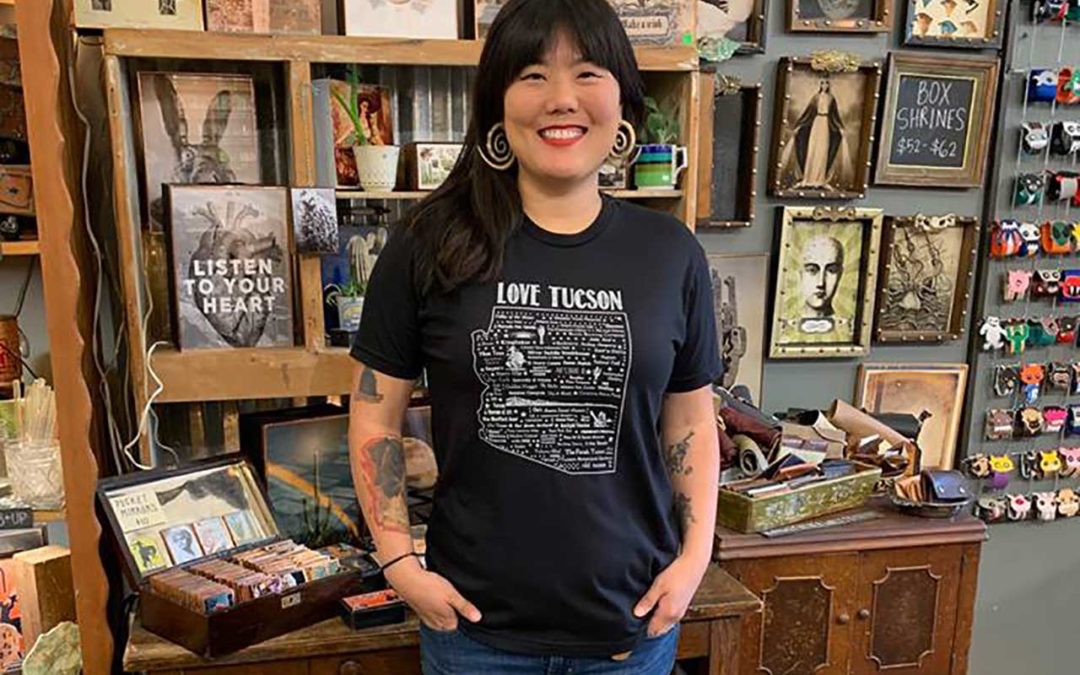
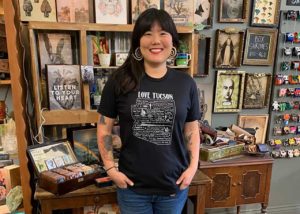 Red Collar Press embraces the history of printmaking, what Amy calls, “processes for the people.” She loves the smell of ink, the feel of quality paper, the vibrant ink colors, and the impressions left from a carving are only a few perks of printing through laborious means.
Red Collar Press embraces the history of printmaking, what Amy calls, “processes for the people.” She loves the smell of ink, the feel of quality paper, the vibrant ink colors, and the impressions left from a carving are only a few perks of printing through laborious means.